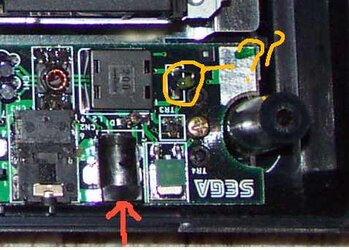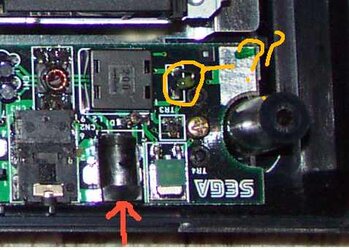I found a Sega lot at the thrift store for 15$ last friday, including:
Original genesis 1 (the one that has the extra controller port on the back)
SegaCD 1
Two original sega-brand 3-button controllers.
1 sega RF unit
1 sega genesis power adapter
I thought that was a great deal. I know the model-1 CDs are sought after. Unfortunately the CD doesn't work... Everything else works so I'm hoping I at least came out on par. A working genesis power adapter alone is wort at least 5$.
The segaCD never turns on (I have a working genesis/CD1 already setup at home, I just moved all the connections over to ensure that none of the cabling was a problem. So yes, I do know that the CD requies its own power).
I read through the past threads. I tried shuffling the genesis-CD connection, but that didn't do anything. The next thing I'll try tonight is seeing if the fuse is out. However, I'm worried about that. I've never had much luck with fuses. In my experience, a blown fuse usually means blown-out power logic. I've had both a VCR and a receiver blow fuses, and when I replaced the fuse, immediately upon re-applying power (turning it on), the fuse blew out again, usually accompanied by a ball of lightning and the smell of spent magic. Yes, I matched the volts and amps on the fuse right.
So, just incase the fuse thing isn't it, or doesn't work, can you recommend anything else?
If not, maybe I can sell it to somebody cheap. It might be worth something to someone for the laser lens or CD tray or something.
BTW, does anyone know of a good place to buy fuses? The last time I tried to find a fuse (for a Sony receiver that was less than 5 years old), I couldn't find the correct sized fuse anywhere. Radio shack had nothing rated for enough amps. Best Buy and other related stores had nothing. I tried a bunch of auto-part stores that sell lots of car-audio stuff, and finally found a fuse with the right ratings, but it was about 25% bigger diameter. It barely fit into the metal holder. My wife had the same problem when she tried to replace a fuse in her car amp. Checked every store there was and couldn't find a fuse that was the right shape and was rated for enough amps. What's the deal here? Why should it be so hard to find fuses for common household electronics? Especially when they have such a large selection of just not the right fuses?
Thanks,
JMT.
Original genesis 1 (the one that has the extra controller port on the back)
SegaCD 1
Two original sega-brand 3-button controllers.
1 sega RF unit
1 sega genesis power adapter
I thought that was a great deal. I know the model-1 CDs are sought after. Unfortunately the CD doesn't work... Everything else works so I'm hoping I at least came out on par. A working genesis power adapter alone is wort at least 5$.
The segaCD never turns on (I have a working genesis/CD1 already setup at home, I just moved all the connections over to ensure that none of the cabling was a problem. So yes, I do know that the CD requies its own power).
I read through the past threads. I tried shuffling the genesis-CD connection, but that didn't do anything. The next thing I'll try tonight is seeing if the fuse is out. However, I'm worried about that. I've never had much luck with fuses. In my experience, a blown fuse usually means blown-out power logic. I've had both a VCR and a receiver blow fuses, and when I replaced the fuse, immediately upon re-applying power (turning it on), the fuse blew out again, usually accompanied by a ball of lightning and the smell of spent magic. Yes, I matched the volts and amps on the fuse right.
So, just incase the fuse thing isn't it, or doesn't work, can you recommend anything else?
If not, maybe I can sell it to somebody cheap. It might be worth something to someone for the laser lens or CD tray or something.
BTW, does anyone know of a good place to buy fuses? The last time I tried to find a fuse (for a Sony receiver that was less than 5 years old), I couldn't find the correct sized fuse anywhere. Radio shack had nothing rated for enough amps. Best Buy and other related stores had nothing. I tried a bunch of auto-part stores that sell lots of car-audio stuff, and finally found a fuse with the right ratings, but it was about 25% bigger diameter. It barely fit into the metal holder. My wife had the same problem when she tried to replace a fuse in her car amp. Checked every store there was and couldn't find a fuse that was the right shape and was rated for enough amps. What's the deal here? Why should it be so hard to find fuses for common household electronics? Especially when they have such a large selection of just not the right fuses?
Thanks,
JMT.


